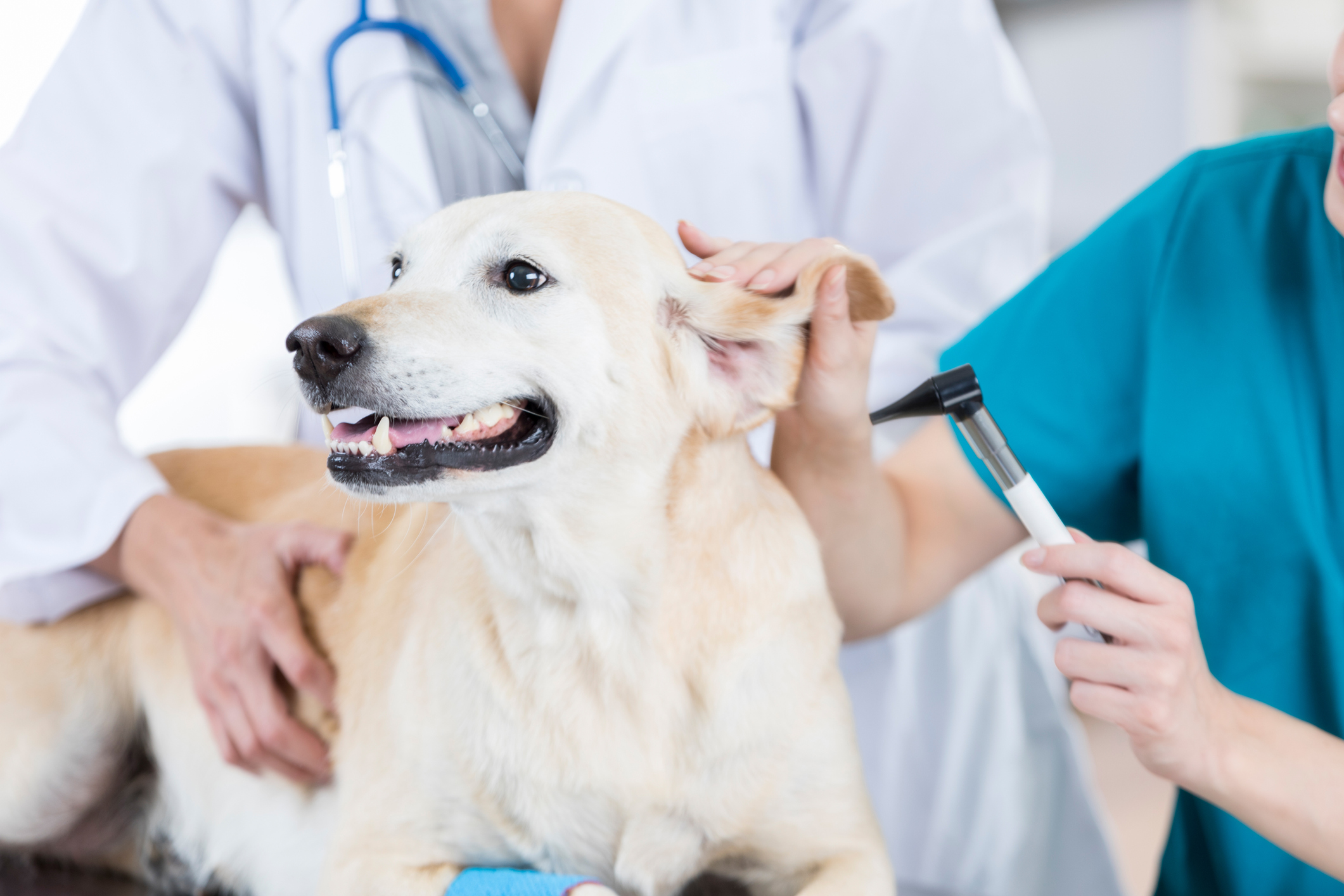The usual suspects
This month Blue Cross looks at the most common medical conditions vets see in dogs and cats
Many medical conditions can be quickly and easily treated, so it’s always better to seek the advice of a vet sooner rather than later if you’re concerned about the health of your pet. They will be able to advise on the best course of treatment.

SKIN AND EAR DISEASE
An ear infection is an irritating and painful overgrowth of bacteria or yeast in the ear canal, usually caused by an underlying condition such as skin conditions, ear mites or excess earwax. Ear scratching, pain and head shaking are all common symptoms of an infection, while a head tilt or loss of balance could signal that the infection has moved deeper into the ear. Symptoms including rashes, sores, fur loss and dry skin can be caused by fleas, allergies, infections and mites, and left untreated, could become more difficult to rectify. If you notice any symptoms, then contact your vet for advice as soon as possible on the best remedy. Most can be quickly treated, but the majority are caused by allergies needing long-term treatment.
BEHAVIOURAL PROBLEMS
Behavioural problems, which have a welfare impact on you and your pet, can manifest as physical disease in cats and dogs – for example, diarrhoea, urine infections or skin irritation.
You may notice that they react to other animals or noise differently and become more sensitive, which can be caused by underlying health problems.
If you notice changes in your pet’s behaviour, it is best to seek the advice of
a trained behaviourist or vet as soon as possible, so that the right course of treatment or training can be put in place, as the problems are likely to worsen over time.
OBESITY
Being obese puts your pet at risk of health problems and is likely to impact on their life expectancy. It’s important to know what your pet’s ideal shape is and recognise when it changes. You can use guides such as this to help you make sure your pet is in good shape – ukpetfood.org/resource/dog- weight-size-o-meter
A healthy diet and exercise are key to controlling your pet’s weight. If you’re struggling with your pet’s weight or notice any dramatic weight changes, then always contact your vet for help.
ARTHRITIS AND OSTEOARTHRITIS
- Arthritis causes inflammation in the joints, making movement painful and difficult.
- In cats, you may notice they become less active or more withdrawn, as well as reducing their grooming.
- In dogs, you may see your pet starting to slow down, take it easier on walks, or no longer go up stairs or jump on a chair.
- Book your pet in for a vet check up if you notice any of these signs, as they can be caused by other health conditions as well, or if you notice any limping, stiff gait or licking or chewing of particular areas that may be painful.
- The condition is mostly caused by wear and tear on the joints, but can also be the result of an injury, hip dysplasia or under-developed joints.
- There is no cure for arthritis, but the pain can be managed with anti-inflammatories and/ or painkillers, along with a healthy diet. It is important that your pet maintains a healthy weight to reduce any strain. You can also provide your pet with a soft, comfortable bed.
Top tips to maintain good health
- BOOK ANNUAL HEALTH CHECKS AND VACCINATIONS
A yearly visit to the vet for a check-up will make sure all is okay with your pet and ensure you are up to date with essential vaccinations, flea and worming treatments.
- MAINTAIN A HEALTHY WEIGHT
The amount you need to feed your pet depends on their size and exercise level. Follow the feeding guide on the packet or tin, but if you have any concerns then consult a vet.
- GOOD TOOTHCARE
A build-up of plaque can become a potential source of infection, so cleaning your pet’s teeth every day really can make a difference. You can buy special toothbrushes and paste to use on your pet’s teeth.
- GROOMING AND BATHING
Regular grooming keeps your pet’s coat tangle- free, as well as removing dead hair, dirt and dandruff. It’s essential in long- haired cats to do this daily and for short-haired cats to do this regularly. For a short-haired, smooth-coated dog, grooming should be done at least once a week. A rough- or long-coated dog will need more regular grooming and will often require clipping every four to 12 weeks, with regular – usually daily – maintenance brushing and cleaning. Terrier types and some other breeds may need ‘stripping’ rather than normal grooming to remove dead hairs in the coat, as these dogs don’t shed hair as well as others. Dogs have sensitive skin and bathing them too often can cause skin irritation. When bathing your dog always use a special dog shampoo, which is gentler on their skin than human products. - CHECK YOUR PET’S EARS
Most have healthy, clean ears, but if you notice any black wax or discharge, then it’s worth contacting your vet for advice.
- NAILCARE
Claws naturally wear down, so generally shouldn’t require trimming, but any that are curling round and could damage the foot should be trimmed. This can be a problem in older pets, so contact your vet for advice. - IDENTIFYING CHANGES IN BEHAVIOUR
Pets show pain and suffering in different ways. Changes in your pet’s behaviour could be an early sign of illness or pain. - NEUTERING
This will prevent unexpected litters and can also avert certain illnesses and diseases.
We’ve lots of pet advice on our website, bluecross.org.uk, but if you’re concerned about your pet, we’d always advise contacting your vet for help as soon as possible so that a quick solution can be found.

Leave a Reply
Please login or register to leave a comment.